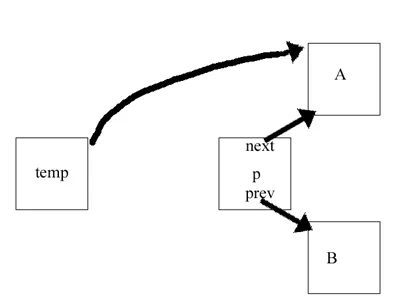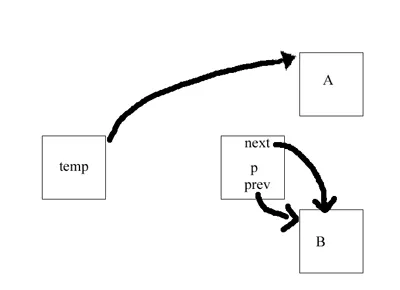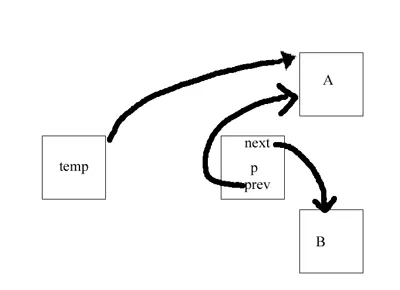下面这个方法可以反转一个长度为n的双向链表。我不理解它是如何实现的。我已经添加了注释,请纠正我如果我错了。我不确定遍历过程是如何工作的。
public void reverseDLL( ) {
Node temp=head; //swap head and tail
head=tail; // head now points to tail
tail=temp; //tail points to head
//traverse the list swapping prev and next fields of each node
Node p=head; //create a node and point to head
while(p!=null) //while p does not equal null
{ //swap prev and next of current node
temp=p.next; // p.next does that not equal null? confusing.
p.next=p.prev; //this line makes sense since you have to reverse the link
p.prev=temp; //having trouble visualizing this.
p=p.next;//advance current node which makes sense
}
}

 现在我们的最后一步是使“prev”指向“next”曾经指向的内容。我们该怎么做呢?幸运的是,我们在“temp”中存储了“next”曾经指向的内容(换句话说是A)。所以让我们使用它来分配“prev”。
现在我们的最后一步是使“prev”指向“next”曾经指向的内容。我们该怎么做呢?幸运的是,我们在“temp”中存储了“next”曾经指向的内容(换句话说是A)。所以让我们使用它来分配“prev”。
